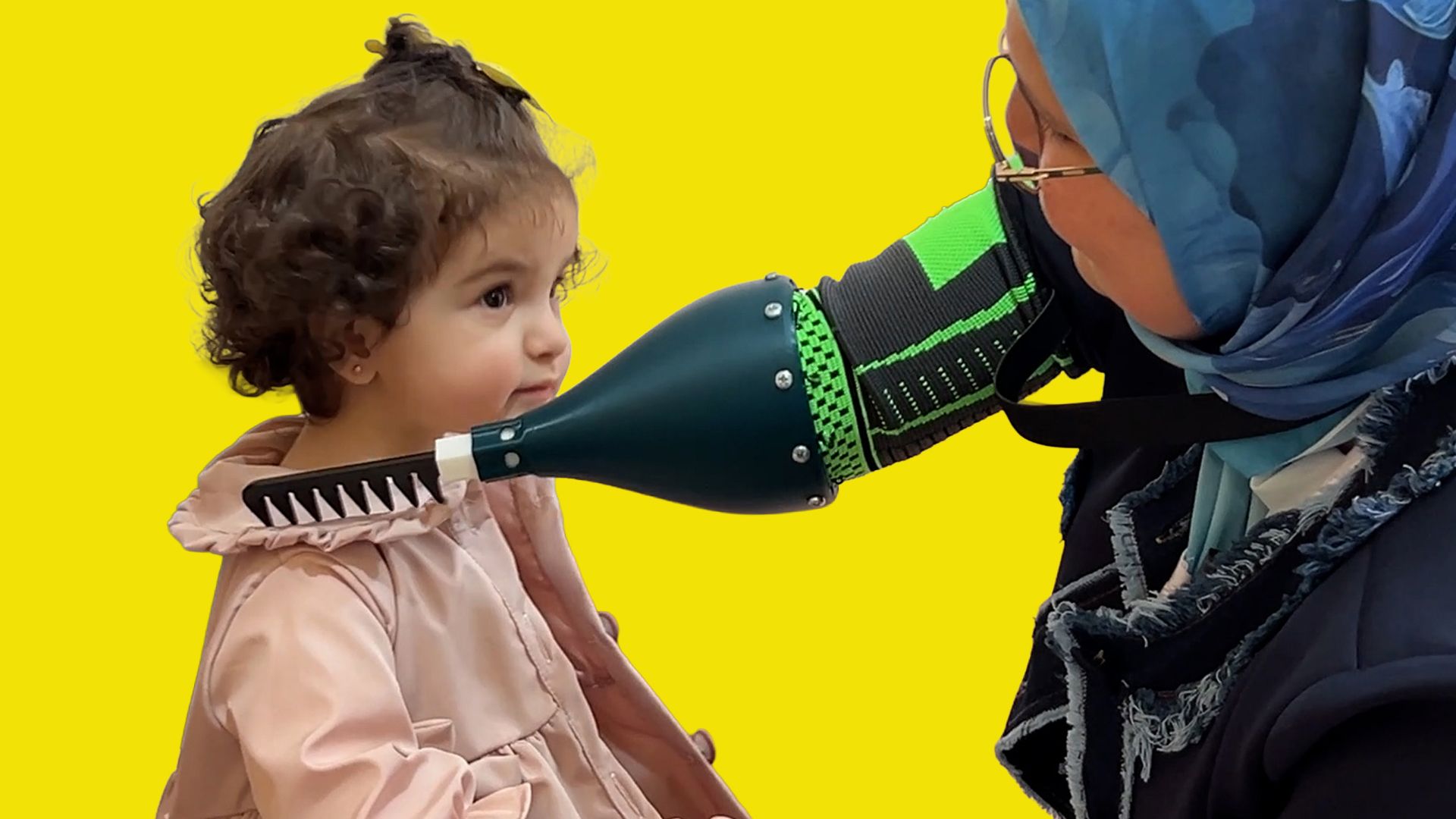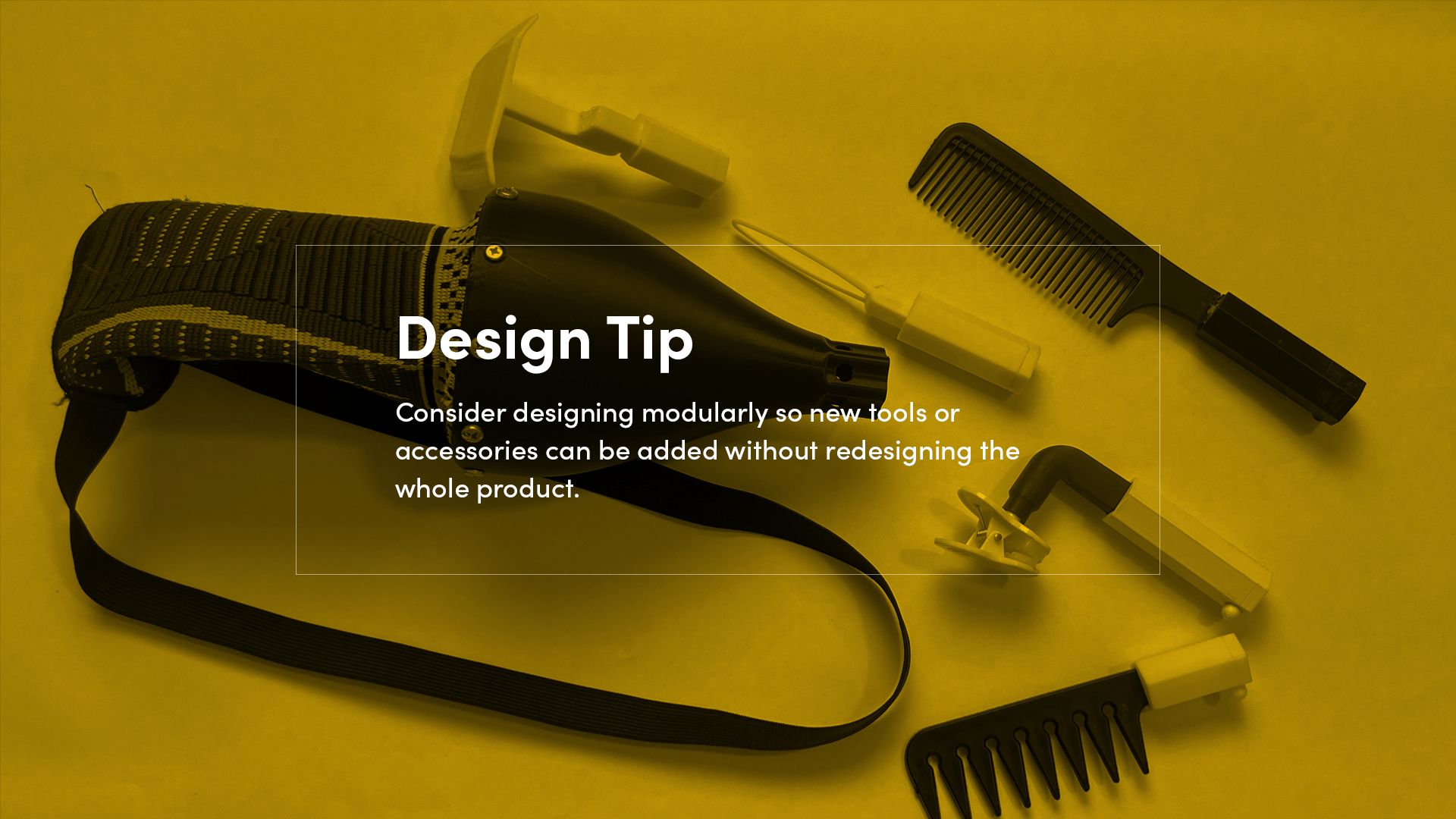Design Spotlight: Creovate’s Modular Assistive Arm Device
At PrintLab, we’re continually inspired by the creativity and problem solving shown by students, educators and makers using design and 3D printing to tackle real-world challenges - from assistive technology to everyday products. To celebrate these efforts, we’re launching the Design Spotlight series - a collection of stories and example designs from across the PrintLab and Make:able communities.

12th November 2025 • Case Studies
Each feature showcases the design outcome, followed by our own reflections on the product and process, highlighting the creative decisions, techniques and features that stood out to us, as well as practical tips you can apply in your own design endeavours.
First up is one of the 2025 Make:able Assistive Technology Challenge Winners – Team Creovate (from Robogeex Academy), who designed a lightweight, multi-functional assistive device for Karima, a mother with partial arm loss. The design supports her in daily tasks such as brushing her daughter Jouri’s hair and preparing meals. It features interchangeable, custom-designed attachments – including a hairbrush tool, zipper puller, food prep aid, and buttoning tool. Check out their video story below.
And now onto our reflections, where we explore what made Team Creovate’s design and process stand out. Along the way, we’ll share a few practical tips that may be especially useful for those taking part in Make:able or working on similar real-world design challenges.
Resisting the “New Hand” Assumption
Instead of assuming that Karima needed a new hand, the team began by understanding what she actually wanted to do. Through interviews and a design thinking method called pain-point mapping, they identified the real daily tasks that mattered most to her, such as brushing hair, preparing food and dressing her daughter. This shift from device-led to task-led thinking shaped the entire design process and set the foundation for a meaningful solution that truly fit Karima’s lifestyle.

Designed with Karima, Not Just for Her
Karima was involved at multiple stages of the project, taking part in interviews and several rounds of testing. Her feedback directly shaped each new prototype, helping the team refine comfort, movement and usability. Many designers stop after an initial interview and never reconnect with the end user, but Team Creovate kept Karima involved from start to finish. This continuous feedback loop ensured that the device evolved around real experiences rather than assumptions, resulting in a design that truly reflected her needs and preferences.

Smart Prototyping: Split Model Testing
One clever technique used by the team was what we call Split Model Testing. Instead of printing and testing one version at a time, the students designed and 3D printed three variations of a single section of the design, each with a different diameter. This allowed Karima to try all options in one session and quickly identify which felt most comfortable and secure.
By comparing multiple versions side by side, the team gathered faster, more accurate feedback and reduced the need for repeated redesigns. It’s an efficient, user-friendly approach that saved time while improving the final fit.

Iterating Beyond Functionality
If you look at Creovate’s first iteration, you can see it is functional and technically solves the problem. But a working solution is not always a great solution. What really stood out to us was how the team continued to push beyond functionality, refining comfort, flexibility and overall usability through three full prototype versions.
This level of refinement is especially important for devices that will be used frequently and over long periods of time. Small improvements in comfort and balance can make a huge difference to the user’s experience day after day. By staying focused on these details, the team transformed a functional idea into something that felt natural, durable and intuitive to use.

Modular + Open Source Potential
What really impressed us about Creovate’s final design was how modular and adaptable it was. Rather than locking the product into a single purpose, they created a connection system built from common components that are easy to find and replace. This practical choice makes the design simple to reproduce and modify, giving it strong open source potential.
By thinking beyond a single user and considering how others might adapt or expand on their work, the team showed a real understanding of what open source design is about. It is not just about sharing files, but creating systems that invite collaboration and improvement.

—
We hope you enjoyed this first feature in our Design Spotlight series and a big thank you to Team Creovate and Robogeex for joining the Make:able Challenge and sharing their journey. There are many more stories to come, each highlighting creative problem solving, clever techniques and lessons you can apply in your own projects.
Want to learn how to design and make your own assistive devices like Team Creovate? Join the Make:able Challenge today to gain access to the online toolkit